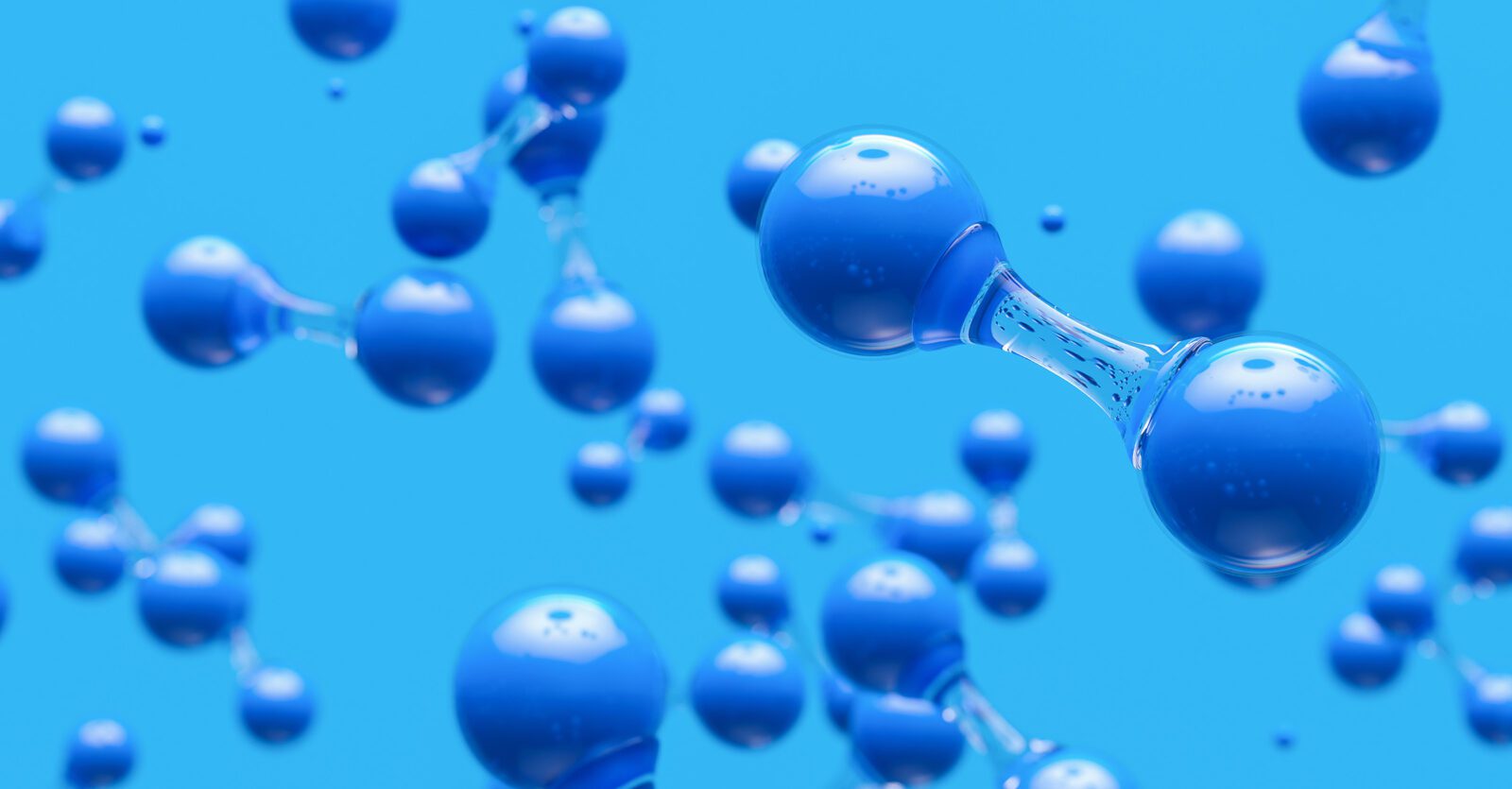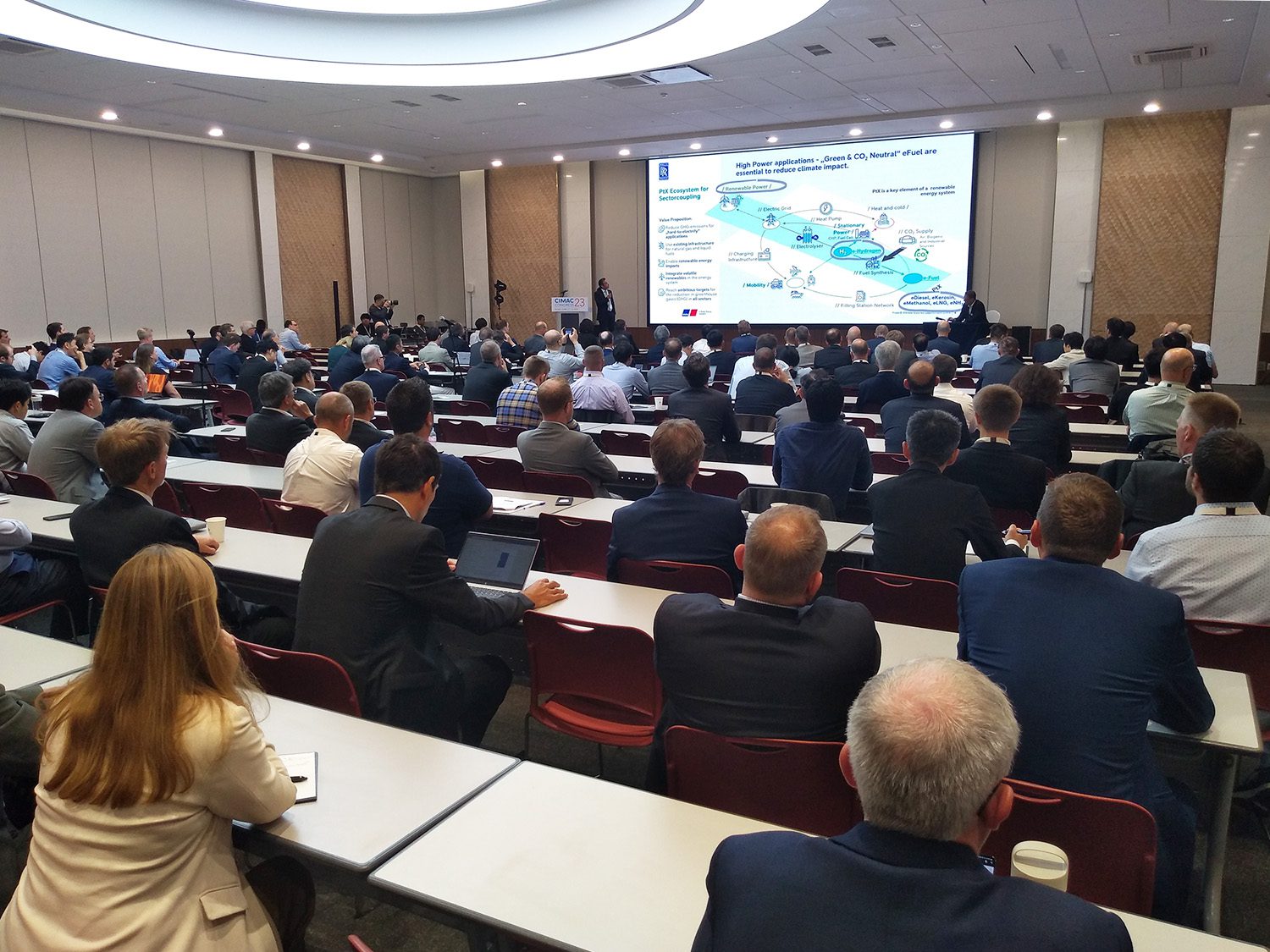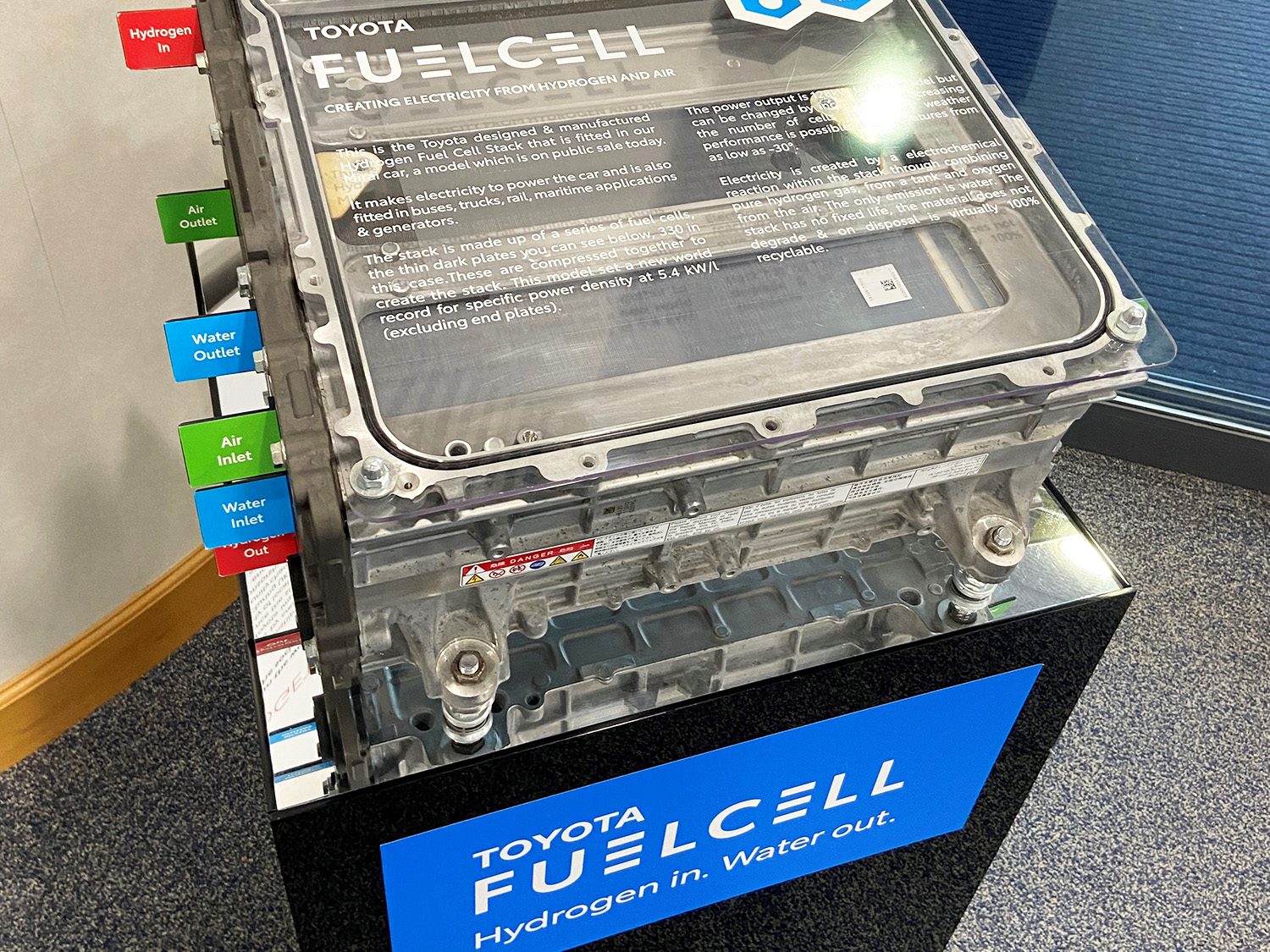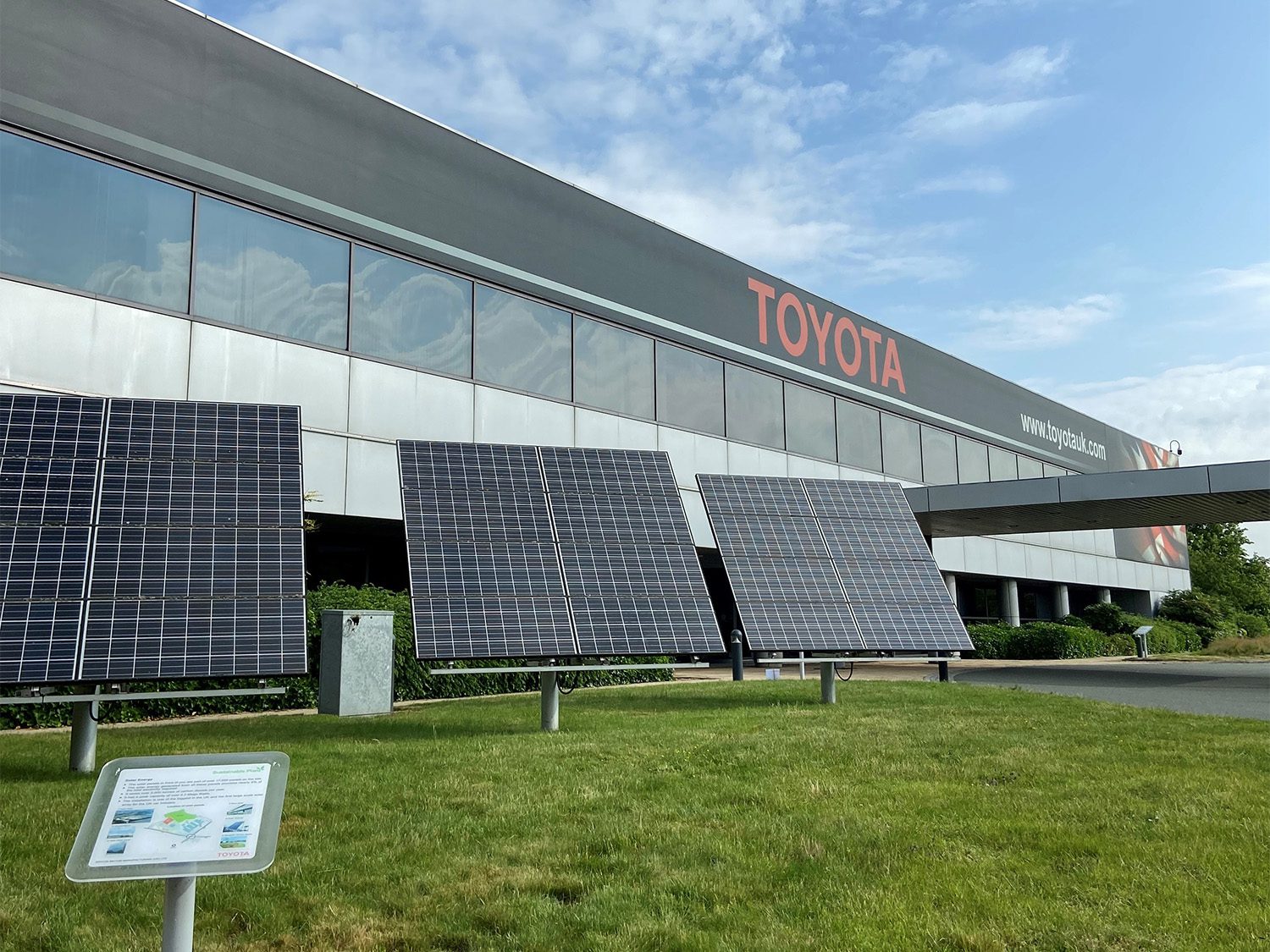
Bowman, a leading provider of electrified turbomachinery solutions, has consistently been at the forefront of the energy transition industry, shaping the future of energy with groundbreaking initiatives. Integral to this is our ability to keep up to date (and in turn, keep you up to date!) with the progression of the fuel transition. What does the current landscape look like and how will our innovations help? We attended CIMAC Congress and the Hydrogen Supply Chain Network to explore.
Exploring the Future of ICEs
Recently, our performance engineering director, Keith Douglas, attended the CIMAC Congress, which is widely recognised as the largest global platform for exchanging ideas and advancements in large internal combustion engines (ICEs). This event provided Bowman with an exceptional opportunity to engage with industry experts, explore cutting-edge technologies, and gain valuable insights. For over three decades, CIMAC has been a vital hub for professionals, researchers, and decision-makers to discuss the sector's challenges, opportunities, and latest developments.
In summary, Keith's reflections on the conference highlighted the active pursuit of decarbonisation solutions by OEMs and suppliers, focusing on the use of carbon-neutral fuels like green hydrogen, green ammonia, and green methanol. However, the challenge lies in ensuring sufficient availability of eFuels for the widespread implementation of "eFuel Ready" engines, necessitating significant investments in various areas such as renewable electricity, electrolysis, eFuel production, transportation, and deployment infrastructure.
Based on current projections, it is expected that the availability of eFuels will be inconsistent at best for the next 10 to 20 years. As a result, the large engine industry will need ICE technology that can effectively burn eFuels when they are accessible, while also seamlessly transitioning to conventional fuels like natural gas or diesel to maintain a continuous power supply. To achieve this capability, ongoing efforts are focused on developing injection and combustion systems that can facilitate this transition. However, there are still opportunities for improving the air handling and turbocharging systems in large ICEs to enhance the process of switching between different fuels.
Bowman's eTurbo Systems solutions, some of which are commercially available today, can enhance the air handling system's capability to optimize air delivery and cylinder conditions for combustion. This, in turn, improves ICE power output and efficiency, and minimises engine emissions, irrespective of the fuel composition. Bowman's attendance at CIMAC highlights our drive to learn more about what other companies are working on which provides Bowman with an invaluable learning experience aiding us in supporting our customers’ transition towards their goals.
By attending informative sessions, workshops, and panel discussions, we gained insights into emerging trends, market dynamics, and the evolving landscape of internal combustion engines.
Driving Growth in the Hydrogen Sector
Additionally, our Head of Sales, Dominic, attended the Hydrogen Supply Chain Network show organised by Innovate UK KTN at Toyota's manufacturing facility in Derby. This event offered Bowman the opportunity to showcase our latest technology, connect with the hydrogen community, explore funding opportunities, and learn about the initiatives of other organizations. Dominic expressed his enthusiasm, stating that the hydrogen supply chain network show was the ideal platform for Bowman. Our product range and engineering capabilities enable us to collaborate on complex projects with high-profile companies, contributing to achieving the Net Zero targets. Throughout the day, Dominic engaged with like-minded individuals who were eager to learn about Bowman's products and the benefits of adopting our technology within the hydrogen sector. He thoroughly enjoyed the show and looks forward to attending again next year.
The Hydrogen Supply Chain Network hosted a series of informative sessions that featured case studies on hydrogen network, distribution, and storage within the UK. During these sessions, various speakers addressed the challenges associated with transitioning to hydrogen. One particularly noteworthy presentation was delivered by Cadent gas, which revealed early indications of the projected hydrogen demand in the UK. The forecast suggested that industries would require an annual hydrogen supply ranging from 160 to 560 terawatt-hours per year. However, consultations with the power industry revealed that their independent requirement alone would be approximately 45 terawatt-hours per year, a significant amount that surpasses the existing production, distribution, and storage capabilities.
In addition to the demand and supply concerns, several important questions were raised about the sourcing of green hydrogen and how to expedite its adoption across multiple industries. These questions highlighted the financial challenges faced by organisations, particularly small and medium-sized enterprises (SMEs), in developing the necessary technologies for the hydrogen transition. A spokesperson from one company emphasised the need for additional funding, pointing out the difficulties in securing the remaining 25% of the required finances, despite Innovate UK providing 75% of the funding. This financial gap has resulted in research and production challenges for many organisations, with government support being the primary response sought by Innovate UK KTN.
The attendance of Bowman at the event proved to be fruitful, as several promising prospects emerged from the discussions and presentations. It is hoped that future events will continue to bring together important organisations and foster growth in the hydrogen sector.


Bowman, a leading provider of electrified turbomachinery solutions, has consistently been at the forefront of the energy transition industry, shaping the future of energy with groundbreaking initiatives. Integral to this is our ability to keep up to date (and in turn, keep you up to date!) with the progression of the fuel transition. What does the current landscape look like and how will our innovations help? We attended CIMAC Congress and the Hydrogen Supply Chain Network to explore.
Exploring the Future of ICEs
Recently, our performance engineering director, Keith Douglas, attended the CIMAC Congress, which is widely recognised as the largest global platform for exchanging ideas and advancements in large internal combustion engines (ICEs). This event provided Bowman with an exceptional opportunity to engage with industry experts, explore cutting-edge technologies, and gain valuable insights. For over three decades, CIMAC has been a vital hub for professionals, researchers, and decision-makers to discuss the sector's challenges, opportunities, and latest developments.
In summary, Keith's reflections on the conference highlighted the active pursuit of decarbonisation solutions by OEMs and suppliers, focusing on the use of carbon-neutral fuels like green hydrogen, green ammonia, and green methanol. However, the challenge lies in ensuring sufficient availability of eFuels for the widespread implementation of "eFuel Ready" engines, necessitating significant investments in various areas such as renewable electricity, electrolysis, eFuel production, transportation, and deployment infrastructure.
Based on current projections, it is expected that the availability of eFuels will be inconsistent at best for the next 10 to 20 years. As a result, the large engine industry will need ICE technology that can effectively burn eFuels when they are accessible, while also seamlessly transitioning to conventional fuels like natural gas or diesel to maintain a continuous power supply. To achieve this capability, ongoing efforts are focused on developing injection and combustion systems that can facilitate this transition. However, there are still opportunities for improving the air handling and turbocharging systems in large ICEs to enhance the process of switching between different fuels.
Bowman's eTurbo Systems solutions, some of which are commercially available today, can enhance the air handling system's capability to optimize air delivery and cylinder conditions for combustion. This, in turn, improves ICE power output and efficiency, and minimises engine emissions, irrespective of the fuel composition. Bowman's attendance at CIMAC highlights our drive to learn more about what other companies are working on which provides Bowman with an invaluable learning experience aiding us in supporting our customers’ transition towards their goals.
By attending informative sessions, workshops, and panel discussions, we gained insights into emerging trends, market dynamics, and the evolving landscape of internal combustion engines.
Driving Growth in the Hydrogen Sector
Additionally, our Head of Sales, Dominic, attended the Hydrogen Supply Chain Network show organised by Innovate UK KTN at Toyota's manufacturing facility in Derby. This event offered Bowman the opportunity to showcase our latest technology, connect with the hydrogen community, explore funding opportunities, and learn about the initiatives of other organizations. Dominic expressed his enthusiasm, stating that the hydrogen supply chain network show was the ideal platform for Bowman. Our product range and engineering capabilities enable us to collaborate on complex projects with high-profile companies, contributing to achieving the Net Zero targets. Throughout the day, Dominic engaged with like-minded individuals who were eager to learn about Bowman's products and the benefits of adopting our technology within the hydrogen sector. He thoroughly enjoyed the show and looks forward to attending again next year.
The Hydrogen Supply Chain Network hosted a series of informative sessions that featured case studies on hydrogen network, distribution, and storage within the UK. During these sessions, various speakers addressed the challenges associated with transitioning to hydrogen. One particularly noteworthy presentation was delivered by Cadent gas, which revealed early indications of the projected hydrogen demand in the UK. The forecast suggested that industries would require an annual hydrogen supply ranging from 160 to 560 terawatt-hours per year. However, consultations with the power industry revealed that their independent requirement alone would be approximately 45 terawatt-hours per year, a significant amount that surpasses the existing production, distribution, and storage capabilities.
In addition to the demand and supply concerns, several important questions were raised about the sourcing of green hydrogen and how to expedite its adoption across multiple industries. These questions highlighted the financial challenges faced by organisations, particularly small and medium-sized enterprises (SMEs), in developing the necessary technologies for the hydrogen transition. A spokesperson from one company emphasised the need for additional funding, pointing out the difficulties in securing the remaining 25% of the required finances, despite Innovate UK providing 75% of the funding. This financial gap has resulted in research and production challenges for many organisations, with government support being the primary response sought by Innovate UK KTN.
The attendance of Bowman at the event proved to be fruitful, as several promising prospects emerged from the discussions and presentations. It is hoped that future events will continue to bring together important organisations and foster growth in the hydrogen sector.


Bowman, a leading provider of electrified turbomachinery solutions, has consistently been at the forefront of the energy transition industry, shaping the future of energy with groundbreaking initiatives. Integral to this is our ability to keep up to date (and in turn, keep you up to date!) with the progression of the fuel transition. What does the current landscape look like and how will our innovations help? We attended CIMAC Congress and the Hydrogen Supply Chain Network to explore.
Exploring the Future of ICEs
Recently, our performance engineering director, Keith Douglas, attended the CIMAC Congress, which is widely recognised as the largest global platform for exchanging ideas and advancements in large internal combustion engines (ICEs). This event provided Bowman with an exceptional opportunity to engage with industry experts, explore cutting-edge technologies, and gain valuable insights. For over three decades, CIMAC has been a vital hub for professionals, researchers, and decision-makers to discuss the sector's challenges, opportunities, and latest developments.
In summary, Keith's reflections on the conference highlighted the active pursuit of decarbonisation solutions by OEMs and suppliers, focusing on the use of carbon-neutral fuels like green hydrogen, green ammonia, and green methanol. However, the challenge lies in ensuring sufficient availability of eFuels for the widespread implementation of "eFuel Ready" engines, necessitating significant investments in various areas such as renewable electricity, electrolysis, eFuel production, transportation, and deployment infrastructure.
Based on current projections, it is expected that the availability of eFuels will be inconsistent at best for the next 10 to 20 years. As a result, the large engine industry will need ICE technology that can effectively burn eFuels when they are accessible, while also seamlessly transitioning to conventional fuels like natural gas or diesel to maintain a continuous power supply. To achieve this capability, ongoing efforts are focused on developing injection and combustion systems that can facilitate this transition. However, there are still opportunities for improving the air handling and turbocharging systems in large ICEs to enhance the process of switching between different fuels.
Bowman's eTurbo Systems solutions, some of which are commercially available today, can enhance the air handling system's capability to optimize air delivery and cylinder conditions for combustion. This, in turn, improves ICE power output and efficiency, and minimises engine emissions, irrespective of the fuel composition. Bowman's attendance at CIMAC highlights our drive to learn more about what other companies are working on which provides Bowman with an invaluable learning experience aiding us in supporting our customers’ transition towards their goals.
By attending informative sessions, workshops, and panel discussions, we gained insights into emerging trends, market dynamics, and the evolving landscape of internal combustion engines.
Driving Growth in the Hydrogen Sector
Additionally, our Head of Sales, Dominic, attended the Hydrogen Supply Chain Network show organised by Innovate UK KTN at Toyota's manufacturing facility in Derby. This event offered Bowman the opportunity to showcase our latest technology, connect with the hydrogen community, explore funding opportunities, and learn about the initiatives of other organizations. Dominic expressed his enthusiasm, stating that the hydrogen supply chain network show was the ideal platform for Bowman. Our product range and engineering capabilities enable us to collaborate on complex projects with high-profile companies, contributing to achieving the Net Zero targets. Throughout the day, Dominic engaged with like-minded individuals who were eager to learn about Bowman's products and the benefits of adopting our technology within the hydrogen sector. He thoroughly enjoyed the show and looks forward to attending again next year.
The Hydrogen Supply Chain Network hosted a series of informative sessions that featured case studies on hydrogen network, distribution, and storage within the UK. During these sessions, various speakers addressed the challenges associated with transitioning to hydrogen. One particularly noteworthy presentation was delivered by Cadent gas, which revealed early indications of the projected hydrogen demand in the UK. The forecast suggested that industries would require an annual hydrogen supply ranging from 160 to 560 terawatt-hours per year. However, consultations with the power industry revealed that their independent requirement alone would be approximately 45 terawatt-hours per year, a significant amount that surpasses the existing production, distribution, and storage capabilities.
In addition to the demand and supply concerns, several important questions were raised about the sourcing of green hydrogen and how to expedite its adoption across multiple industries. These questions highlighted the financial challenges faced by organisations, particularly small and medium-sized enterprises (SMEs), in developing the necessary technologies for the hydrogen transition. A spokesperson from one company emphasised the need for additional funding, pointing out the difficulties in securing the remaining 25% of the required finances, despite Innovate UK providing 75% of the funding. This financial gap has resulted in research and production challenges for many organisations, with government support being the primary response sought by Innovate UK KTN.
The attendance of Bowman at the event proved to be fruitful, as several promising prospects emerged from the discussions and presentations. It is hoped that future events will continue to bring together important organisations and foster growth in the hydrogen sector.






